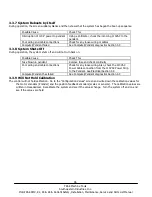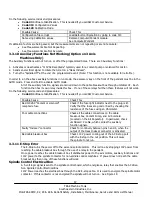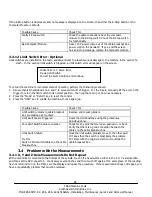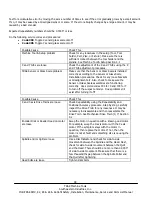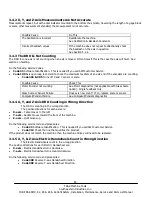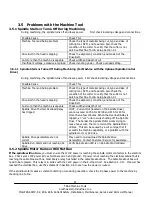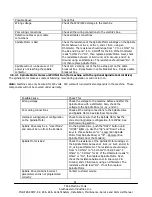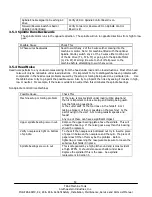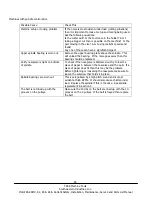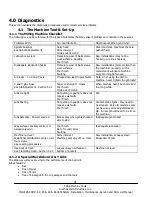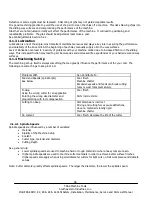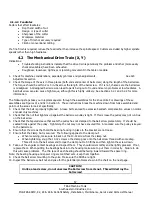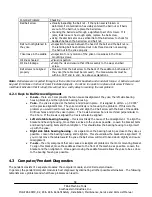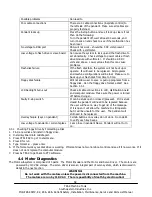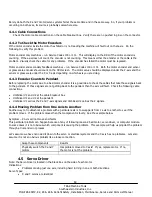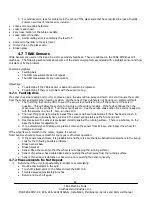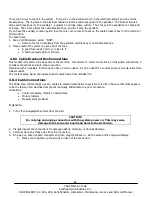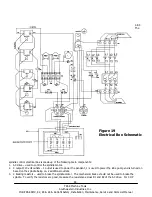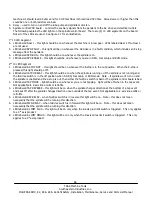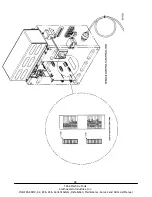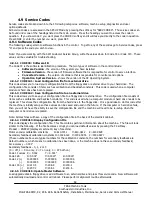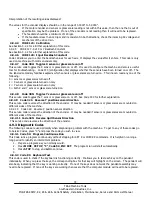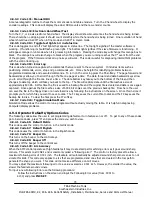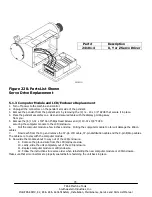
60
TRAK Machine Tools
Southwestern Industries, Inc.
ProtoTRAK SMX, K2, K3 & K4 & Retrofit Safety, Installation, Maintenance, Service and Parts List Manual
Rarely do both the X and Y motor/servo systems fail at the same time and in the same way. So, if your problem is
occurring on both axes, its source is probably somewhere else.
4.4.1 Cable Connections
Check the motor cable connections on the cable breakout box. Verify there are no pushed in pins on the connector.
4.4.2 To Check the Motor Encoders
If the motor encoder inside the motor has failed or is not reading the machine will fault out on that axis. Do the
following to verify this problem:
Motor encoder only machines – run Service Codes 100 or 131. This will display on the DRO if the motor encoder is
counting. If the axis does not count, the encoder is not counting. This means either the encoder or the cable is the
problem. Visually check the cable for any problems. If the encoder has failed the motor must be replaced.
Motor encoder and secondary feedback machines – run Service Codes 100 or 131. Both the motor encoder and sensor
or glass scale encoder should count on the DRO screen. The motor value should be displayed under the Z-axis and the
sensor or glass scale under the X or Y-axis depending on which axis you are doing.
4.4.3 Encoder Counts to Pendant
Before replacing the motor due to a bad motor encoder it is a good idea to check the cables that take those signals back
to the pendant. If these signals are not getting back to the pendant then the axis will fault. Check the following cable
connections.
Umbilical #1 and #2 at the cable breakout box
Umbilical #1 and #2 at the pendant
Umbilical #1 carries the X and Y-axis signals and Umbilical #2 carries the Z signals.
4.4.4 Moving Problem from One Axis to Another
Another way to troubleshoot a problem with a particular axis is to swap parts from 1 axis to another to see if the
problem moves. If the problem moves then that component is faulty. See the example below.
Symptom – X Axis will not move and faults
This particular problem can happen because of any of following reasons: bad motor, servo driver, or computer module.
In some cases it is not obvious which component is causing the problem. This example will help us pinpoint the problem
through a trial and error process.
Let’s assume we have narrowed it down to the servo or electrical systems and the Y-axis has no problems. Lets also
assume it is not an obvious problem like a loose connection.
Swap these components
Results
Physically switch the X and Y
motors
Has problem moved to Y-axis? If yes, replace motor. If no,
the motor is not the problem.
4.5 Servo Driver
Note: the Servo Driver is located in the black box on the side of each motor.
Indications:
Problems moving just one axis, including hard turning in one or both directions.
Servo Types:
X and Y servos are identical

